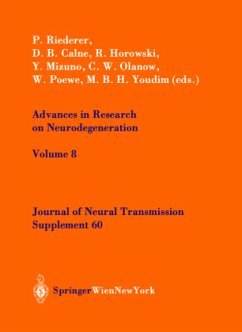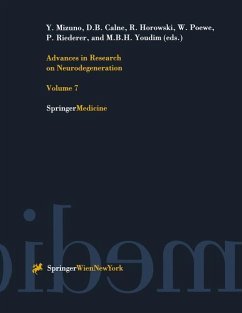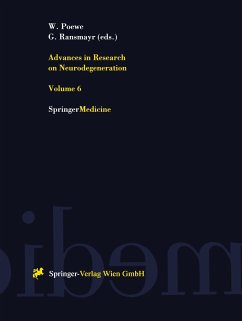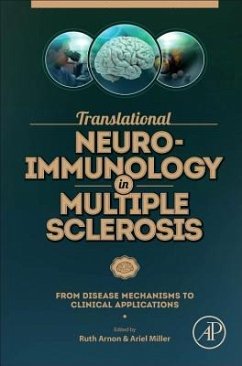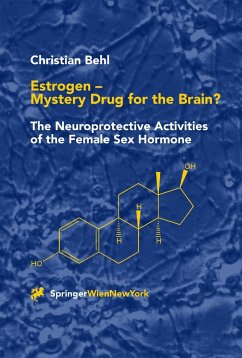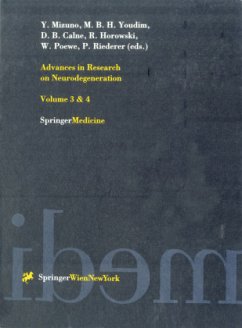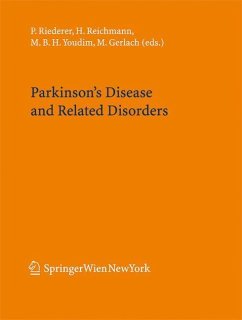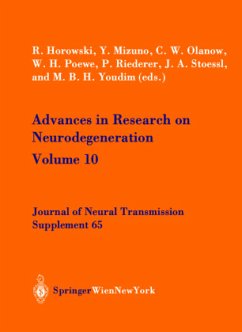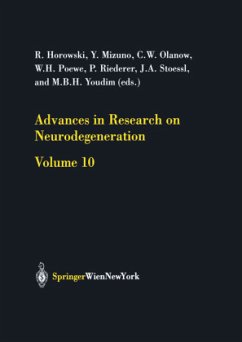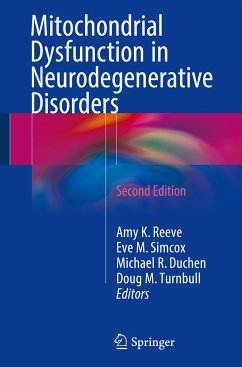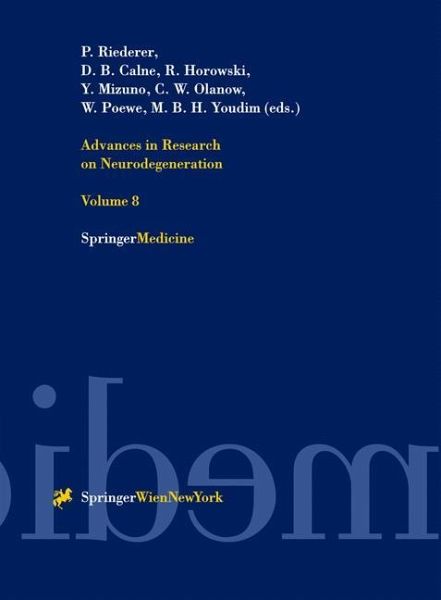
Advances in Research on Neurodegeneration

PAYBACK Punkte
58 °P sammeln!
This volume highlightens recent advances in the research of neurodegenerative processes and cell death. Also the role of inflammation in neurodegenerative processes is elucidated. A respectable number of articles deals with neuroprotective/neuroregenerative strategies. Although most of this work is preclinical, there is also first evidence from clinical studies that neuroprotection should be possible in neurodegenerative disorders like Parkinson's disease, amyotropic lateral sclerosis, Huntington's Chorea and eventually also Alzheimer's disease. Top scientists and international opinion leaders have discussed and lectured at the 8th International Winter Conference on Neurodegeneration (IWCN) in Tegernsee, Bavaria, Germany, from February 9-13, 2000. They have put together a valuable, comprehensive and timely piece of work that reviews all the above mentioned problems and tries to evaluate therapeutic strategies of the future.
The 8th International Winter Conference on Neurodegeneration from Febru ary 9 to 13, 2000 took place in Tegernsee, Bavaria, Germany. The interest shown in this symposium, which was carried by invited speakers only, was striking. 28 lectures in 5 sessions dealt with themes on basic science and therapy strategies for neurodegenerative illness. This time especially basic mechanism of cell death and resulting causal treatment possibilities were centre themes of the lectures and lively discussions. In accordance with tradi tion 5 lectures on Multiple Sclerosis finished the convention. 60 scientists from 13 countries discussed current questions to these themes. The Symposium started with a lecture on the history of the develop ment of modern-L-DOPA-therapy. Lectures on cell death of dopaminergic nerve cells, new valuation regarding assembly, built up and function of neuromelanin of Substantia nigra and with this, the question of the physio logic and pathobiochemical role of dopamine and neuromelanin built the first block of themes which consequently extended to molecular and genetic aspects of cell death. Highlights of the symposium were neuroprotective and neuroregenerative future therapy strategies together with discussions on the difficulties of clinical neuroprotection. Developmental biological aspects on nerve cells, reorganisation and neurodegeneration showed a stimulating point of view of momentary and future development possibilities of new and more causal forms of therapy of neurodegenerative illness.



